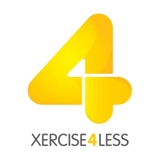Title Page
-
Site conducted
-
Conducted on
-
Prepared by
-
Location
-
Instructor teaching
-
Duration of classes
Pre class set up
-
Sound system checked
-
Bikes safe to use
-
air con at appropriate level
-
Lighting at correct levels
Wamup
-
Injury screening complete
-
fire exits explained
-
bike set up explained
-
instructor using microphone
-
appropriate level for warmup
-
appropriate music selection for warmup
Main workout choreography
-
Instructor pre cues changes of position etc in advance
-
Good music selection for movements
Technique- overall competency is based on success in the below components
Ride easy
Position
-
Hips to back of saddle
-
Hands shoulder width on flat of bar
-
Chest lifted
-
shoulders down and neutral
Resistance
-
Demonstrated base race or seated climbing resistance
-
Demonstrates control in the saddle not bouncing through hips
Pace
-
Riding at correct tempo for music given and training focus
Pedal
-
Not excessively pointed or Achilles stretched
-
riding in circles
Racing
Position
-
Hips to back of saddle
-
Hands to outside of handlebars
-
Upper body at 45 degrees (90 degrees from upper arm to torso)
-
Chest lifted
-
Shoulders down
Resistance
-
Uses correct racing or attack resistance
-
demonstrates control in saddle not bouncing through hips
Pace
-
Able to hit the fast beat safely and effectively
Pedal
-
Not excessively pointed or Achilles stretched
-
Riding in circles
Racing forward
Position
-
Hips slightly forward
-
Hands outside handlebars
-
upper body at 45 degrees (90 degrees from upper arm to torso)
-
Chest lifted
-
Shoulders down
Resistance
-
Uses correct racing resistance not bouncing in saddle
Pace
-
Close to or above tempo safe and effective
Pedal
-
Fixed ankle
-
toes slightly dipped
-
riding in circles
Standing climb
Position
-
Backside just touching saddle
-
Hands towards end of handle bars
-
90 degrees from upper arm to torso
-
Chest lifted
-
Bodyweight moving side to side (no up and down movements)
Resistance
-
Correct climbing resistance to allow to hit the tempo with control
Pace
-
Maintains the rhythm of the music
Pedal
-
Not excessively pointed or Achilles stretched
-
Riding in circles
Seated climb/power
Position
-
Hips to back of saddle and stable
-
Hands to outside of handlebars
-
upper body at 45 degrees (90 degrees from upper arm to torso)
-
Chest lifted
-
shoulders down
Resistance
-
Correct climbing resistance
Pace
-
Maintains the rhythm of the music
Pedal
-
Not excessively pointed or Achilles stretched
-
Riding in circles
Standing attack
Position
-
Hips slightly forward of saddle and level
-
Hands towards end of handlebars
-
Chest lifted
-
shoulders down
Resistance
-
Correct attack or climbing resistance
Pace
-
At or slightly quicker than tempo
Pedal
-
Not excessively pointed or Achilles stretched
-
Pedalling in circles
Coaching
Layer 1 - set up /compulsories
-
Track introduction given
-
positional changes queued
-
resistance changes queued
-
pace changes queued
Layer 2-intensity
-
Coached to improve execution
-
coached to manipulate intensity
-
coached education (the why)
Layer 3 inspire and motivate
-
Role model effort throughout
-
role model technique throughout
-
Intrinsic motivation utilised
-
Extrinsic motivation utilised
-
celebrate effort
Connection
-
Show respect and caring attitude throughout class
-
Look see and respond to what they are doing
Cooldown
-
Congratulated class on effort
-
advised aftercare
-
Upper body stretches completed
-
lower body stretches completed
-
Advised to take resistance off when finished
-
advised to drop handle bars and seats
-
advised to wipe floor and bike after use










